Origami, the ancient Japanese art of paper folding, has transcended cultural boundaries and found its way into the artistic landscape of various nations.
However, in the context of Vietnam, origami is not traditionally woven into the fabric of its cultural heritage.
Rooted in centuries-old practices of crafting “Do” paper from the bark of the Do tree, Vietnamese art has a distinctive history.
Yet, the contemporary art scene has seen a surge in Vietnamese origami artists, such as Hoang Tien Quyet, who meld traditional influences with this Japanese craft.
This exploration delves into whether origami has evolved into a cultural tradition in Vietnam, navigating the interplay between tradition and innovation in the realm of paper artistry.

Is Origami a Tradition in Vietnam?
Origami, the traditional Japanese art of paper folding, has captivated the imagination of artists worldwide.
While it is not historically rooted in Vietnamese culture, contemporary artists like Hoang Tien Quyet have embraced this craft, blending it with traditional Vietnamese elements.
This exploration delves into the evolving relationship between Vietnam and origami, shedding light on how this Japanese art form has found a place in the rich tapestry of Vietnamese artistic expression.
Historical Perspective on Vietnamese Paper Craft
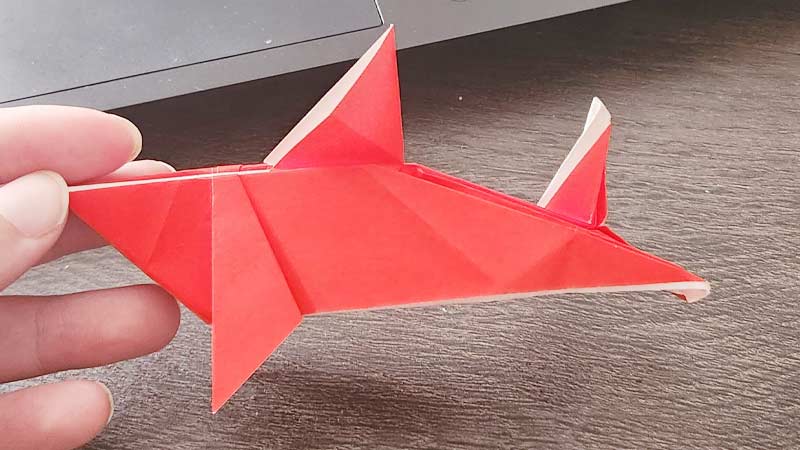
In Vietnamese culture, the art of paper-making from the bark of the Do tree has a centuries-old history. The production of “Do” paper, dating back to the 18th century, has been a significant cultural practice.
Examining this traditional craft helps contextualize the absence of origami in Vietnam’s historical artistic landscape.
Emergence of Contemporary Origami Artists in Vietnam
Despite origami not being a traditional Vietnamese art form, the contemporary art scene has witnessed the rise of talented Vietnamese origami artists.
Hoang Tien Quyet, a notable figure in the origami community, has garnered recognition for his unique fusion of origami techniques with Vietnamese aesthetics. This signals a modern reinterpretation of origami within the Vietnamese cultural context.
Incorporating Traditional Elements into Origami
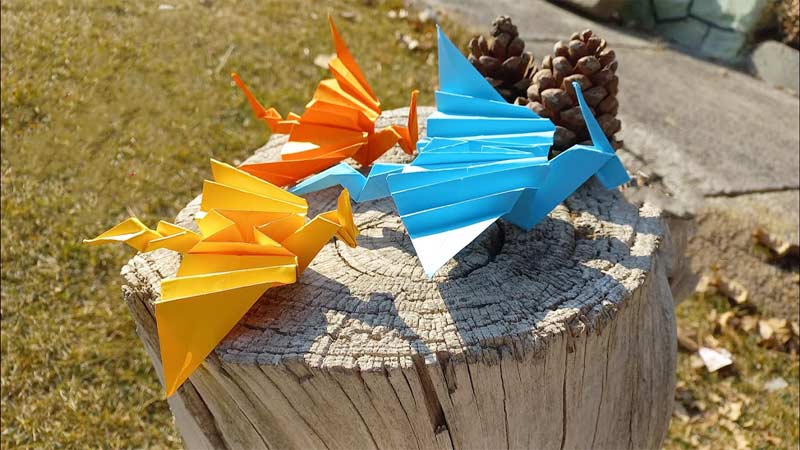
Some Vietnamese artists exploring origami have taken steps to integrate traditional elements into their creations.
This involves infusing origami designs with motifs, symbols, and themes rooted in Vietnamese culture, offering a bridge between the Japanese tradition and the unique artistic heritage of Vietnam.
Challenges and Acceptance in Vietnamese Society
The integration of origami into Vietnamese art has not been without challenges. Traditionalists may resist the inclusion of foreign art forms, while others embrace it as a means of cultural exchange.
Understanding the societal attitudes towards origami in Vietnam provides insight into the evolving dynamics of cultural expression.
The Role of Stylistic Origami in Contemporary Vietnam
While origami may not be deeply ingrained in Vietnamese tradition, the use of stylistic origami, such as paper cranes, has gained visibility.
Exploring the role of these specific origami forms within contemporary Vietnamese art sheds light on the adaptability of traditional styles to a globalized artistic landscape.
What Is the History of Origami in Vietnam?
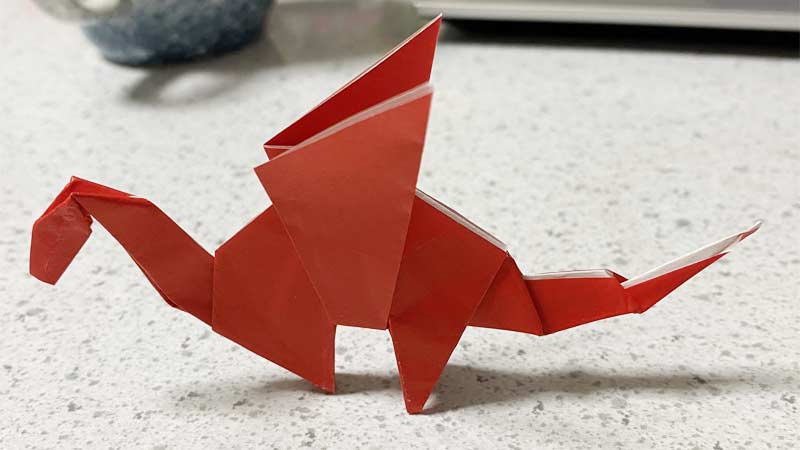
The history of origami in Vietnam is a rich tapestry that intertwines with the cultural and historical influences of Japan and China.
Here is a more detailed exploration of the history of origami in Vietnam:
Introduction of Origami to Vietnam (7th Century)
Origami’s introduction to Vietnam during the 7th century marked a significant cultural exchange.
The arrival of paper from China, transported through the Korean Peninsula, initiated Vietnam’s early engagement with the art of paper folding.
This period laid the foundation for the development of Vietnamese origami, setting the stage for its subsequent evolution.
Development of Vietnamese Paper Making Technology

Vietnamese artisans responded to the influx of paper by innovating their paper-making technology, known as nagashi-suki.
This technological advancement resulted in the production of robust and textured paper, surpassing the qualities of the imported material.
The applications of this new paper extended beyond origami to include decorations and tools for religious ceremonies, showcasing the adaptability of Vietnamese origami to cultural contexts.
Emergence of Ceremonial Origami (Origata)
As origami techniques evolved, a stylized form known as ceremonial origami or origata emerged.
This specialized branch of origami adhered to a code of etiquette, particularly for wrapping gifts and money.
Origata became deeply ingrained in Vietnamese traditions, finding ceremonial significance, especially in religious contexts. The artistry of origata added a touch of elegance to traditional practices.
Influence of the Muromachi Period (1300s-1400s)
The Muromachi period in Japan played a pivotal role in shaping origami decorum, influencing the development of Vietnamese origami.
The Ogasawara and Ise clans, prominent figures in the Ashikaga Shogunate, contributed to the ceremonial aspects of origami.
During this period, ceremonial origami adopted geometric and abstract shapes like noshi and butterflies, distinguishing it from the later emergence of recreational origami.
Rise of Recreational Origami in Vietnam (Mid-1960s)
The mid-1960s saw a surge in the popularity of recreational origami in Vietnam. This phenomenon was catalyzed by the import and translation of origami literature from Japan.
Vietnamese individuals enthusiastically embraced origami as a hobby during this period, marking a cultural exchange that brought the art form closer to the hearts of the local populace.
Contemporary Origami Artists in Vietnam
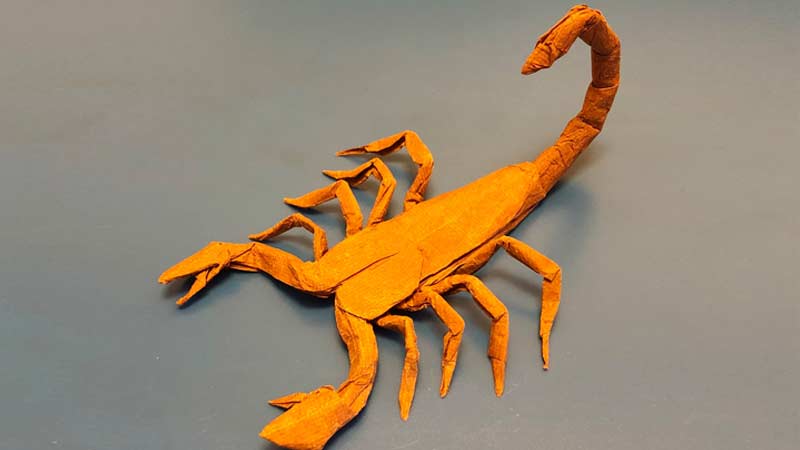
In the contemporary era, origami has not only endured but thrived in Vietnam. Renowned artists such as Hoang Tien Quyet, Nguyen Hung Cuong, and Giang Dinh have emerged as key figures in the Vietnamese origami scene.
These artists, through their creativity and skill, have not only produced remarkable origami works but have also contributed to the ongoing innovation and evolution of this traditional craft.
Growing Tradition and Versatility
Origami has transformed into a growing tradition in Vietnam, fostering community and hobby groups dedicated to its promotion. Beyond its artistic dimensions, origami serves practical and educational purposes.
It has become a tool for teaching children about money and geometry, as well as a medium for creating intricate models of machines and equipment.
Reflection of Culture and Creativity
Origami in Vietnam reflects the country’s vibrant culture and boundless creativity. Its evolution over the centuries showcases a dynamic interplay between traditional practices and contemporary influences.
This art form has become an integral part of Vietnamese heritage, resonating with both its historical roots and its present-day artistic endeavors.
What Are Some Unique Origami Designs Created by Vietnamese Artists?
Vietnamese origami artists have produced a wide array of unique and captivating designs, showcasing their creativity and mastery of the craft.
Here are some examples:
Hoang Tien Quyet’s Expressive Animals
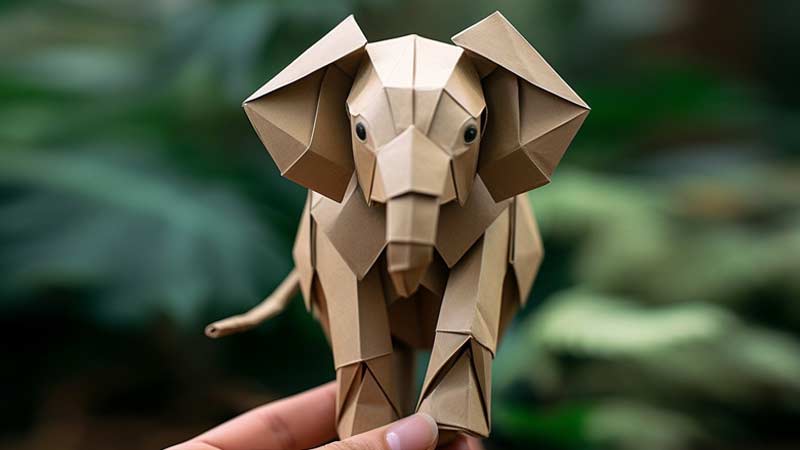
Hoang Tien Quyet’s creations go beyond traditional origami by introducing a wet folding technique.
This innovative approach involves dampening the paper during the folding process, allowing for smoother curves and more intricate details.
His expressive animals, such as roosters, lions, and foxes, exhibit a level of realism rarely seen in origami. The lifelike quality of his designs showcases both technical skill and artistic intuition.
Nguyen Hung Cuong’s Intricate Insects

Nguyen Hung Cuong’s origami designs often focus on the delicate beauty of insects. His meticulous folding technique, coupled with the use of Vietnamese handmade paper, results in creations that capture the essence of these creatures.
The intricate details, from delicate wings to slender antennae, showcase a deep appreciation for the intricacies of nature.
Cuong’s work stands as a testament to the harmonious blend of precision and creativity in origami.
Giang Dinh’s Minimalist Human Forms
Giang Dinh’s origami style is characterized by its minimalism. Despite using only a few folds, his designs skillfully convey the human form’s essential features and emotions. The simplicity of his approach imparts a sense of elegance and poetic charm to his creations.
Giang Dinh’s work showcases how restraint and precision can be powerful tools in origami, allowing for the exploration of profound themes with a minimalist aesthetic.
Traditional Vietnamese Symbols by Various Artists:
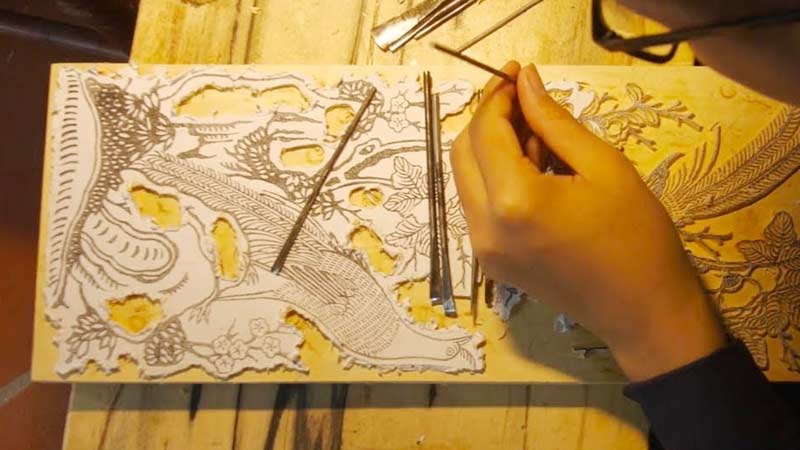
Numerous Vietnamese origami artists draw inspiration from their cultural heritage, incorporating traditional symbols and motifs into their designs.
Cranes, symbolizing longevity, and lotus flowers, representing purity and enlightenment, often find their way into origami creations.
These symbolic designs not only celebrate Vietnam’s rich cultural legacy but also infuse a deeper meaning into the art of paper folding.
Collaborative Installations
In the spirit of community and collective creativity, Vietnamese origami artists occasionally collaborate on large-scale installations.
These installations can be a fusion of diverse styles and designs, showcasing the versatility of origami as a communal art form.
The collaborative efforts result in visually stunning displays that often convey cultural narratives or celebrate shared artistic visions.
Innovative Modular Origami
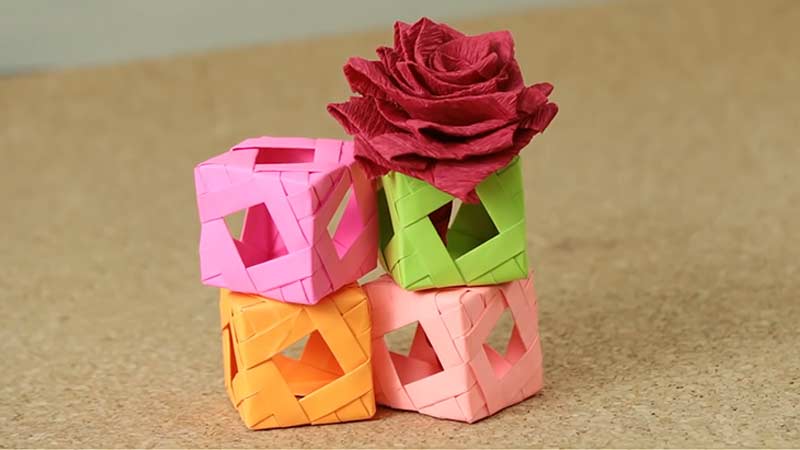
Vietnamese origami artists venture into the realm of modular origami, creating intricate designs by interlocking multiple folded units. These designs can range from geometric shapes to complex and abstract structures.
The modular approach adds an extra layer of complexity and allows artists to explore mathematical precision while still infusing their creations with artistic expression.
Nature-Inspired Origami Sculptures
Inspired by the natural beauty of Vietnam, some origami artists sculpt intricate designs that mimic elements of the environment.
Trees, flowers, and animals come to life in folded form, showcasing a deep connection to nature.
These nature-inspired origami sculptures not only demonstrate technical proficiency but also serve as artistic expressions that pay homage to the country’s landscapes and biodiversity.
Who Are Some Contemporary Vietnamese Origami Artists?
Origami is the art of paper folding, which originated in Japan and has been practiced for centuries.
Origami artists create various shapes and forms from a single sheet of paper, often using complex techniques and patterns.
Here are a few noteworthy Vietnamese origami artists:
Hoang Tien Quyet
- Style: Hoang Tien Quyet is celebrated for his distinctive wet folding technique, where he dampens the paper during the folding process. This approach allows him to create sculptures with smooth curves and realistic forms.
- Specialization: His expertise lies in crafting realistic and expressive animals, showcasing an impressive range that includes roosters, lions, foxes, and more. The expressive nature of his creations sets him apart in the world of origami.
Nguyen Hung Cuong
- Style: Nguyen Hung Cuong is recognized for his meticulous and detailed origami models. Notably, he often utilizes Vietnamese handmade paper, which adds a unique texture and natural patterns to his creations.
- Range of Work: His portfolio is diverse, featuring an array of subjects ranging from insects and birds to mythical creatures and human figures. This diversity reflects his versatility and skill in navigating various complexities within the art of origami.
Giang Dinh
- Style: Giang Dinh distinguishes himself through a commitment to simplicity and minimalism in his origami work. He embraces the challenge of conveying depth and emotion with a minimal number of folds.
- Preference: Focusing on human and animal forms, Giang Dinh’s creations emanate a delicate and poetic quality. By utilizing a minimalist approach, he captures the essence of his subjects, emphasizing the beauty in simplicity within the intricate world of origami.
FAQs
Where Did Origami Originate?
Origami originated in Japan, evolving from traditional Japanese paper-folding techniques that date back to the Edo period (1603-1868).
Is origami a traditional Vietnamese art form?
No, origami is not traditionally rooted in Vietnamese culture. Vietnam has a rich history of crafting “Do” paper from the bark of the Do tree, dating back to the 18th century.
Are there challenges in accepting origami as part of Vietnamese art?
Yes, there are challenges, as some traditionalists may resist the inclusion of foreign art forms.
However, others see it as a form of cultural exchange and welcome the integration of origami into Vietnam’s contemporary art scene.
To Recap
In the tapestry of Vietnamese culture, origami has emerged as a dynamic thread, weaving its way through the traditional fabric.
While not an ancient tradition, contemporary artists like Hoang Tien Quyet have breathed new life into the art of paper folding, blending it harmoniously with Vietnamese influences.
The fusion of traditional elements with the delicate intricacies of origami reflects a modern reinterpretation of cultural expression.
As Vietnam embraces this evolving relationship with origami, it underscores the adaptability of artistic traditions to a globalized world.
The conclusion echoes the synthesis of Japanese craftsmanship and Vietnamese heritage, illustrating how origami, though not a longstanding tradition, has become an integral part of Vietnam’s artistic narrative.
Leave a Reply